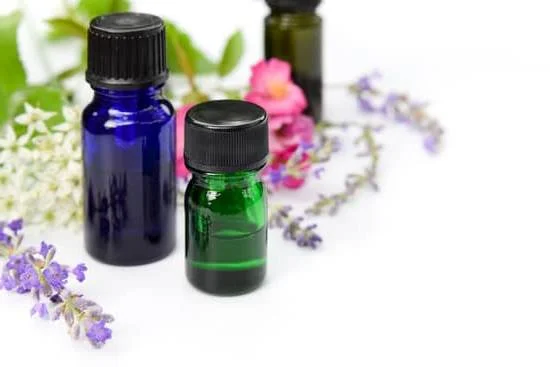Are you ready to embark on a journey of relaxation, ambiance, and therapeutic scents? If so, learning how to make aromatherapy soy candles is the perfect creative outlet for you. In this article, we will delve into the world of aromatherapy soy candles, exploring the benefits they offer and the basic steps involved in creating your own signature creations.
Aromatherapy soy candles have gained popularity in recent years due to their numerous benefits. Not only do they fill your space with delightful fragrances, but they also harness the therapeutic properties of essential oils. Whether you seek stress relief, better sleep, or improved focus, these candles can cater to your specific needs.
Before we dive into the process of making aromatherapy soy candles, it is important to gather all the necessary supplies. This comprehensive list is designed specifically for beginners like yourself who are just starting their candle-making journey. From wax and containers to fragrance oils and wicks, we will outline everything you need to have on hand before getting started.
So get ready to immerse yourself in the art of candle-making as we explore each step in detail. From choosing the perfect fragrances that align with your desired benefits to mastering wicking techniques and adding visual appeal through natural elements and coloring techniques – this article covers it all. So roll up your sleeves and get ready for a calming and rewarding experience with aromatherapy soy candles.
Gathering the Necessary Supplies
When it comes to making aromatherapy soy candles, having the right supplies is essential. Whether you are a beginner or an experienced candle maker, having a comprehensive list of supplies can help ensure a successful candle-making process. Here is a guide to gathering the necessary supplies for beginners:
1. Soy Wax: The main ingredient in aromatherapy soy candles is soy wax. Soy wax is derived from soybean oil and is known for its clean and slow-burning properties. When purchasing soy wax, make sure to choose a high-quality, natural, and eco-friendly option.
2. Candle Containers: To hold your melted soy wax and fragrance oils, you will need candle containers. These can be glass jars, tins, or any heat-resistant container suitable for candle making. Ensure that the containers are clean and free of any cracks or chips.
3. Wicks: The wick is responsible for creating the flame in your candle. Choose wicks specifically designed for use with soy wax candles. It’s important to consider the size and type of wick based on the diameter of your candle container.
4. Fragrance Oils: One of the most exciting aspects of making aromatherapy soy candles is choosing fragrance oils with therapeutic properties. Essential oils derived from plants are highly recommended for their natural scents and potential health benefits.
5. Dyes or Colorants (optional): If you prefer colored candles, you can add dyes or colorants to your soy wax mixture. Keep in mind that too much colorant may affect the scent throw of your candle, so use them sparingly.
Choosing the Perfect Fragrances
When it comes to making aromatherapy soy candles, choosing the perfect fragrances is an essential step. Essential oils not only provide the pleasant scent for your candles but also offer therapeutic benefits that can enhance your well-being. In this section, we will delve into the world of essential oils and explore their therapeutic properties.
There are a wide variety of essential oils available, each with its own unique scent and potential health benefits. Some popular choices for aromatherapy soy candles include lavender, eucalyptus, peppermint, and citrus oils. Lavender oil is known for its calming properties and can help promote relaxation and sleep.
Eucalyptus oil is often used for its invigorating aroma which can help clear the sinuses and improve respiratory function. Peppermint oil has a refreshing scent that can boost energy levels and aid in digestion. Citrus oils like lemon or orange have an uplifting effect on mood and can help relieve stress.
When selecting essential oils for your candles, it is important to consider their therapeutic properties as well as personal preferences. Certain scents may be more suitable for specific purposes or moods you wish to create in your space. For example, if you are looking to create a peaceful ambiance in your bedroom, choosing lavender or chamomile essential oils would be ideal.
To incorporate essential oils into your aromatherapy soy candles, you will need to determine the appropriate amount to use based on the volume of wax you are working with. As a general guideline, a 1-ounce bottle of essential oil typically yields around 600 drops.
A safe starting point for fragrance concentration is about 6-10% of the total candle weight (wax + fragrance). However, it is crucial to refer to the specific recommendations provided by the manufacturer as different fragrances may require varying concentrations.
By carefully selecting essential oils with desired therapeutic properties, you can create aromatherapy soy candles that not only smell wonderful but also offer additional benefits for your well-being. Experimenting with different combinations of fragrances can be a fun and creative way to tailor your candles to suit your individual needs and preferences.
| Essential Oil | Therapeutic Properties |
|---|---|
| Lavender | Calming, promotes relaxation and sleep |
| Eucalyptus | Invigorating, clears sinuses, improves respiratory function |
| Peppermint | Refreshing, boosts energy levels, aids digestion |
| Citrus (e.g. lemon, orange) | Uplifting, relieves stress |
Melt and Pour Method
The melt and pour method is a popular technique for making aromatherapy soy candles. This method is ideal for beginners because it is relatively simple and does not require specialized equipment. Here is a step-by-step guide to help you create your own aromatherapy soy candles using the melt and pour method.
First, gather all the necessary supplies. You will need soy wax flakes, a candle pouring pitcher or double boiler, a thermometer, fragrance oils or essential oils, candle wicks, wick stickers or glue dots, containers for the candles (such as glass jars or tins), and any optional additives like dried flowers or herbs for visual appeal.
Next, measure out the desired amount of soy wax flakes. A good rule of thumb is to use twice as much wax as the container can hold. For example, if you have a 6-ounce jar, use 12 ounces of soy wax flakes.
Melt the soy wax flakes using a candle pouring pitcher placed in a pot of boiling water or by using a double boiler. Heat the wax until it reaches a temperature of around 170-180°F (77-82°C). Be sure to stir occasionally to ensure even melting.
Once the wax has reached the desired temperature, remove it from heat and let it cool slightly. Add your chosen fragrance oil or essential oil to the melted wax and stir well to distribute the scent evenly. The general guideline for adding fragrance oil is about one ounce per pound of wax, but you can adjust this ratio based on personal preference.
Now it’s time to prepare your containers. Attach a wick sticker or glue dot to the bottom center of each container and press the metal end of your wick firmly onto it. Use a wick centering tool or two pencils placed across the top of the container to keep the wick centered while pouring.
Carefully pour the scented melted wax into each container, filling them up about three-fourths of the way. Leave a small space at the top to avoid overflowing when the wax solidifies.
Allow the candles to cool and solidify completely, which usually takes a few hours. Trim the wicks to about a quarter inch in length, and your aromatherapy soy candles are now ready to be enjoyed.
The melt and pour method is an easy and beginner-friendly way to create your own aromatherapy soy candles. With just a few steps and minimal supplies, you can personalize your own scented creations that offer therapeutic benefits for relaxation and stress relief. So why not give it a try and enhance your living space with the soothing ambiance of aromatherapy soy candles?
Perfecting the Art of Wicking
Wicking is a crucial step in making aromatherapy soy candles, as it determines how well the candle will burn and release fragrance. Properly centering and sizing the wick ensures an even burn and prevents tunneling, where the wax doesn’t melt all the way to the edges of the container. This section will provide you with tips and tricks to perfect the art of wicking your candles.
To properly center the wick, start by using a wick sticker or a small amount of hot glue to adhere the metal tab to the bottom of your container. Make sure it is centered before pressing it down firmly. Alternatively, you can also use a clothespin or pencil to hold the wick in place until it has cooled and set.
Choosing the right size wick is equally important. A wick that is too small may result in a weak flame that struggles to melt all of the wax, while a wick that is too large may create excessive heat and smoking. To determine the correct size wick for your candle, consider factors such as container diameter, type of wax used, desired burn time, and fragrance load.
It’s recommended to use a wick chart or consult with experienced candle makers for guidance on selecting the appropriate size. You can experiment with different sizes if needed, but be sure to test each one thoroughly before making larger batches of candles.
- Properly center your wicks using a wick sticker or hot glue.
- Selecting appropriately-sized wicks is crucial for optimal burning.
- Consider factors such as container diameter and fragrance load when choosing your wicks.
By following these tips and tricks, you’ll be able to achieve perfectly wicked aromatherapy soy candles every time. Remember that experimentation and testing are key when it comes to finding the ideal wicks for your specific candle-making process.
Adding Visual Appeal
When it comes to making aromatherapy soy candles, adding visual appeal can enhance the overall experience and aesthetic of your creations. By incorporating natural elements and utilizing coloring techniques, you can create candles that not only smell amazing but also look beautiful. In this section, we will explore different ways to add visual appeal to your homemade candles.
Using Natural Elements
One way to make your aromatherapy soy candles visually appealing is by incorporating natural elements into their design. You can do this by embedding flowers, herbs, or other botanicals into the wax. These natural materials not only provide a stunning visual effect but can also release their own subtle scents when the candle is burned.
To embed natural elements in your candles, you will need to prepare them properly. Make sure any flowers or herbs are completely dried before placing them in the wax. You can press them between heavy books for a few days to accelerate drying time. Once they are dry, arrange them in a mold or glass container and pour the melted soy wax over them. As the wax solidifies, it will hold the natural elements in place.
Coloring Techniques
Another way to add visual appeal to your aromatherapy soy candles is through coloring techniques. Adding color to your candles can give them a vibrant and personalized touch that matches your preferences or home decor.
There are several ways you can color your candles. One popular method is to use liquid candle dyes specifically made for candle making. These dyes come in various colors and are highly concentrated, so a little goes a long way. Start with just a few drops and gradually add more until you achieve the desired color.
Alternatively, you can experiment with natural coloring agents such as herbs or spices. For example, turmeric or paprika can create warm yellow shades while spirulina powder can result in a calming green hue. Remember to test the color outcome before adding any natural coloring agents to your entire batch of wax.
The Science Behind Proper Candle Curing
When it comes to making aromatherapy soy candles, proper candle curing is a crucial step that should not be overlooked. Curing refers to the process of allowing the candle to rest and develop its scent after it has been poured and set. This period of time is essential for achieving optimal scent throw, which refers to the strength and diffusion of the fragrance when the candle is lit.
During the curing process, the fragrance oils in the candles need time to fully bond with the soy wax. This allows for a stronger, longer-lasting scent when they are burned. Additionally, curing helps eliminate any unwanted “chemical” or “off” smells that may be present immediately after pouring the candle. Without proper curing, you may find that your candles have a weak scent or an uneven burn.
To properly cure your aromatherapy soy candles, it is recommended to wait at least 48 hours before lighting them. However, for best results, many experienced candle makers suggest allowing them to cure for at least one week or even longer. The longer you can resist lighting your candles, the better the scent throw will be.
During this waiting period, it’s important to store your cured candles in a cool and dry place away from direct sunlight. This helps prevent any discoloration or changes in texture that may occur due to exposure to heat or light. It’s also a good idea to keep your cured candles away from strong odors as they can absorb external scents easily.
Aromatherapy Soy Candle Care
Once you have made your aromatherapy soy candles, it is important to take proper care of them to ensure they maintain their scent and longevity. By following a few simple tips, you can enjoy the benefits of your creations for an extended period of time.
Firstly, it is crucial to trim the wick before each use. Trimming the wick to about 1/4 inch ensures a clean burn and prevents black soot from forming on the glass container. Be sure to remove any debris or burnt pieces from the previous burn before lighting your candle again.
Additionally, it is recommended to burn your aromatherapy soy candle for a minimum of one hour per inch in diameter each time you use it. This allows the entire surface of the candle to melt evenly, preventing tunneling and maximizing scent throw. Avoid burning your candle for more than four hours at a time as this can cause the fragrance to become less effective.
To extinguish your candle, it is best to use a snuffer or gently blow out the flame rather than blowing directly onto the wax. Blowing onto the wax can cause splattering and potentially ruin the appearance of your candle. It is also important not to move a burning or recently extinguished candle as this can result in spillage or potential injury.
By following these tips on maintaining and extending the lifespan of your aromatherapy soy candles, you can continue to enjoy their fragrances and therapeutic properties for a longer period of time. Proper care will not only enhance your overall experience with these candles but also ensure a safe and enjoyable atmosphere within your living space.
Alternative Candle Making Methods
In conclusion, alternative candle making methods offer a world of possibilities for expanding your candle-making repertoire. While the melt and pour method is a popular choice for beginners, there are many other techniques to explore and experiment with. These alternative methods allow you to create unique and customized candles that reflect your personal style and preferences.
One such method is the container candle making technique. This involves pouring melted wax directly into a container or jar, which eliminates the need for molds. Not only is this method simple and practical, but it also allows you to create stunning layered candles by pouring different colored waxes at various intervals. Additionally, you can incorporate decorative elements such as dried flowers, herbs, or glitter into these candles for added visual appeal.
Another popular alternative technique is pillar candle making. Unlike container candles that require containers or jars to hold the melted wax, pillar candles are freestanding and do not require any external support. This method gives you the freedom to create various shapes and sizes of candles using molds or by hand sculpting. It also allows you to incorporate different textures or embed objects within the candle for a unique touch.
Lastly, if you are looking for a truly artistic approach to candle making, consider exploring the art of sculptural candle making. This method involves creating elaborate and intricate designs using beeswax sheets or carving techniques. Sculptural candles make beautiful centerpieces or gifts and can be customized to fit any occasion or theme.
Frequently Asked Questions
Can I Add Essential Oils to Soy Wax Candles?
Yes, you can add essential oils to soy wax candles. Soy wax is a popular choice for making homemade candles because it has a low melting point and allows for the addition of fragrance oils or essential oils. When adding essential oils to soy wax, it is important to use a proper ratio so that the scent does not become overpowering or diminish too quickly.
Typically, around 1 ounce of essential oil per pound of soy wax is recommended. Additionally, make sure to thoroughly mix the essential oil into the melted wax to ensure an even distribution of fragrance throughout the candle.
What Is the Best Essential Oil for Soy Candles?
The best essential oil for soy candles really depends on personal preference and the desired scent you are looking for. Some popular choices for essential oils in soy candles include lavender, eucalyptus, citrus scents like lemon or orange, and soothing scents like chamomile or vanilla. Lavender is often selected for its calming properties, while eucalyptus can provide a refreshing and invigorating aroma.
Citrus scents offer an uplifting and energizing vibe, and soothing scents create a comforting ambiance. Ultimately, the best essential oil for your soy candle would be one that aligns with your preferences and the atmosphere you want to create.
What Makes a Candle an Aromatherapy Candle?
A candle is considered an aromatherapy candle when it contains specific essential oils known for their therapeutic properties and ability to promote relaxation or improve well-being. These candles are typically made using natural ingredients such as soy wax, beeswax, or coconut wax in combination with pure essential oils derived from plants.
Unlike regular scented candles that use synthetic fragrances, aromatherapy candles harness the power of natural plant extracts to create a more holistic sensory experience. The intention behind using aromatherapy candles is to enhance mood, reduce stress levels, improve sleep quality, or aid in various other wellness aspects through the inhalation of these beneficial aromatic compounds released when the candle is burned.

Are you looking for a natural way to improve your health and wellbeing?
If so, aromatherapy may be the answer for you.





